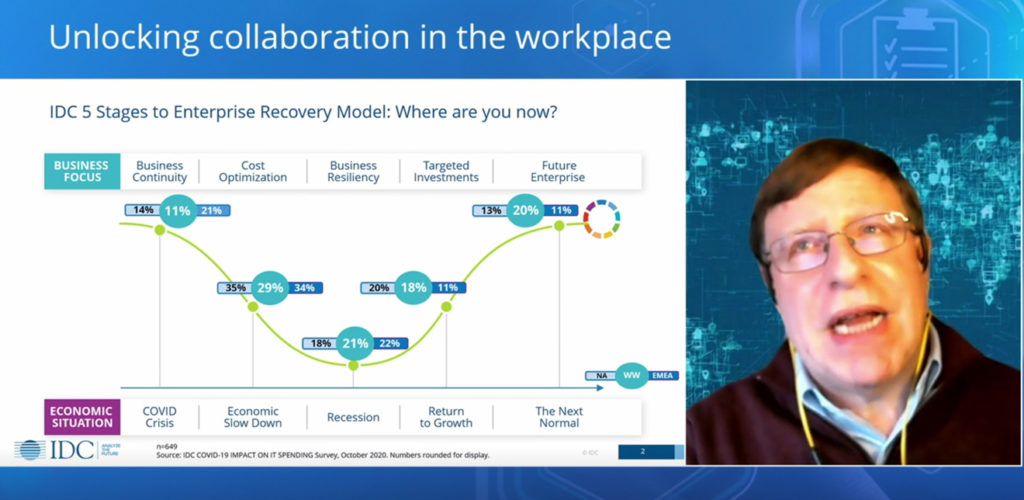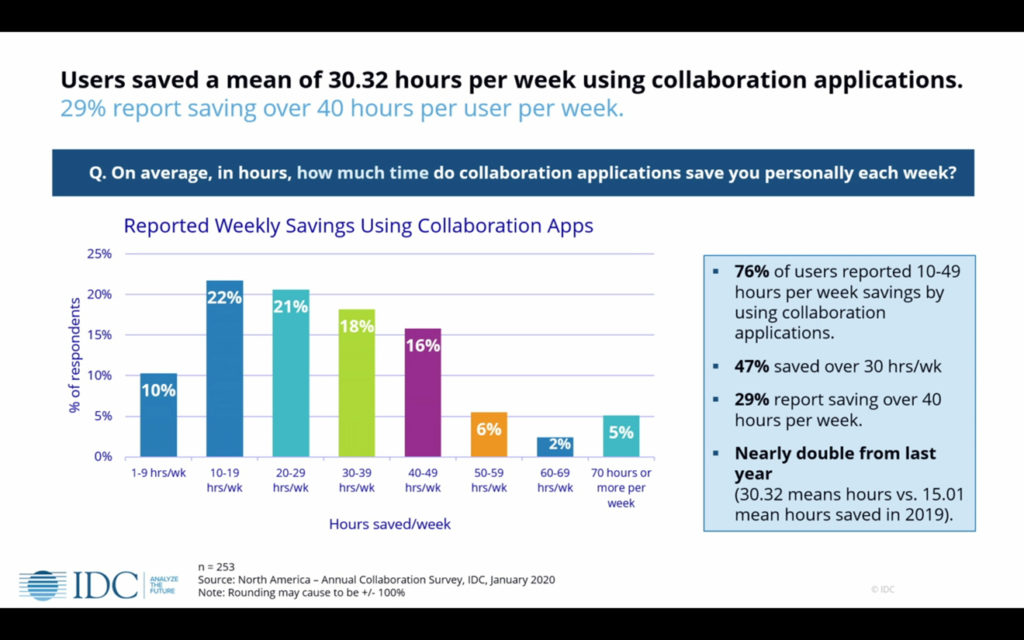In the past year, the office workplace has changed dramatically, creating new opportunities for forward-thinking organizations. For example, team collaboration is on the rise, supported by cloud-based platforms and new metrics for success that go beyond the return on investment (ROI).
“The benefits of workplace collaboration extend widely, from real-time access to information and increased productivity to helping employees feel more connected to each other,” said Wayne Kurtzman, research director, social and collaboration, IDC. “In addition, new metrics are emerging to determine the effectiveness of these integrated collaboration tools.”
Kurtzman discussed how enterprises are moving along the path to the “next normal,” in a July 14 BrightTalk webinar, “Unlocking Collaboration in the Workplace,” hosted by Harold Jackson, head of global analyst relations, Slack. “Collaboration delivers on employee expectations, and translates to real business value,” said Jackson.

The path to the ‘next normal’
Since the pandemic hit in 2020, the ability to collaborate from anywhere – including partners and vendors as well as employees – became a core business continuity requirement, said Kurtzman. IDC research found that 70 percent of enterprises that were surveyed regularly collaborate with partners and 48 percent of enterprises regularly collaborate with customers (B2B and B2C).
However, organizations are various points along the path to collaboration, just as they are in their financial and business models. While 60 percent are still pulling out of the pandemic-related business trough, nearly 40 percent are returning to growth or investing in future-oriented digital projects. “We have found that when companies move to digital transformation, they collaborate at a higher rate,” he said. ‘But that often occurs unevenly in pockets within the business.”
Benefits of collaboration
When IDC asked IT leaders about the benefits of real-time collaboration, the key benefits included “less time wasted looking for information” and overall increased productivity for users and teams. In fact, a typical user saved 30.32 hours a week using collaboration tools, and 29 percent of users reported saving more than 40 hours a week. Those outcomes were nearly double last year’s findings, said Kurtzman.
IDC’s survey also found that roughly one in three respondents felt more informed and connected at work and we’re developing better relationships with others. “Feeling more connected and building better work relationships have become more crucial in remote work environments, and also have a positive impact on production,” Kurtzman said.
IT leaders noted another significant benefit: deploying collaborative applications helps companies recruit and retain talent. One reason is that new workers are usually already tech-savvy consumers who use collaborative tools in their personal lives. “When COVID hit, many workers who were already connected became mentors to the laggards,” Kurtzman said. “Today, IT leaders can partner with these early adopters to leverage their collaboration experience.”

New metrics for success
When IDC asked companies how they are measuring the success of their collaboration initiatives, the responses focused on enhanced productivity and outcomes, including:
• Actions completed
• Fewer emails
• Team results
• Actions taken
• Ideas shared
• Fewer meetings
Kurtzman said these metrics typically involve an integrated data approach. For example, actions taken and completed drilling into the applications where the work is being done. When those platforms are integrated into a “collaborative stack,” these metrics can be aggregated and correlated, enabling this new class of metrics to be realized, he added.
Looking ahead, Kurtzman expects collaborative applications to be even more important in the future. “Work today is a team sport within the enterprise,” he said. “But along with the technology, your organization needs to be powered by a culture of collaboration. People don’t share their best ideas if they don’t feel safe, so build a workplace that encourages trust as the foundation for collaboration.”
